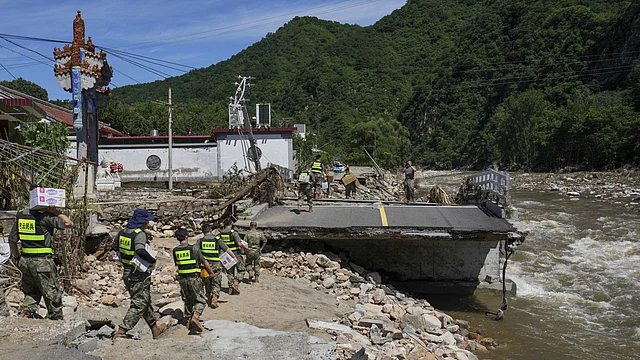Beijing Braces for More Floods After Deadly Rains
Beijing’s red rainstorm alert on 4 August 2025, after rains killed 44, signals intensifying climate-driven floods, requiring urgent improvements in disaster preparedness.

Beijing issued a red rainstorm alert on 4 August 2025, a week after torrential rains killed 44, as climate-driven extreme weather continues to batter the Chinese capital.
On 4 August 2025, Beijing’s meteorological service raised its highest red alert, expecting over 100 mm of rain in six hours, with some areas forecast to receive 200 mm. The alert followed a week of devastating storms that claimed 44 lives, displaced 300,000 residents, and damaged 24,000 homes across districts like Fangshan and Mentougou. Flood warnings remain active in mountainous areas, with risks of landslides and mudslides heightened by saturated soils.
The heavy rainfall, linked to warming seas and air, reflects a broader surge in extreme weather across East Asia. The World Meteorological Organization notes that climate change is increasing atmospheric moisture, leading to more intense downpours. Beijing’s water authority highlighted Miyun, Huairou, and Fangshan as high-risk zones. Residents were urged to avoid rivers and mountainous areas, with evacuations ordered in vulnerable districts.
The storms caused widespread disruption, collapsing roads and prompting mass evacuations. Tianjin issued a yellow alert, forecasting further downpours. Last week’s rains followed deadly floods in Guangdong, where five died, indicating a regional pattern of climate-driven disasters. The government deployed soldiers to deliver relief supplies, but damaged infrastructure slowed efforts.
China’s four-tier warning system, with red as the highest level, aims to alert residents and ensure preparedness. However, critics argue that response systems need improvement, as seen in the 2023 Hong Kong floods, where authorities faced backlash for inadequate preparation. Beijing’s challenges include urban drainage systems overwhelmed by record rainfall and the need for better coordination among agencies.
Investments in flood-resistant infrastructure and early warning systems are critical to reducing future losses. The economic toll of such disasters, potentially reaching billions, underscores the urgency of climate adaptation measures across China.
In conclusion, Beijing’s ongoing red alert highlights the escalating impact of climate-driven rains. Strengthening disaster preparedness and infrastructure resilience is essential to protect lives and mitigate economic losses.
Source: Outlook Business
What's Your Reaction?

















